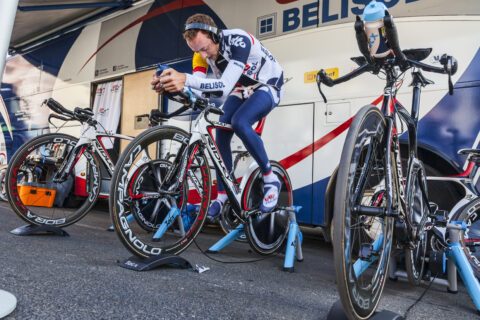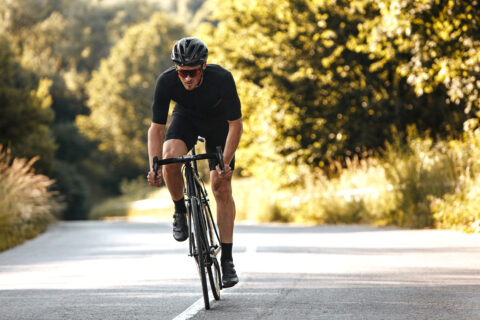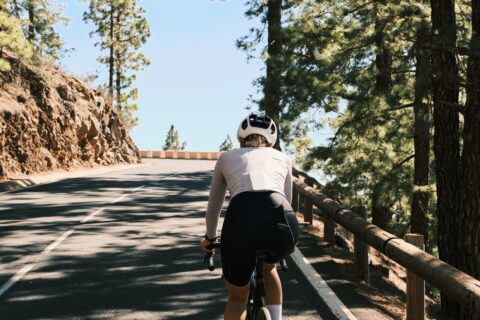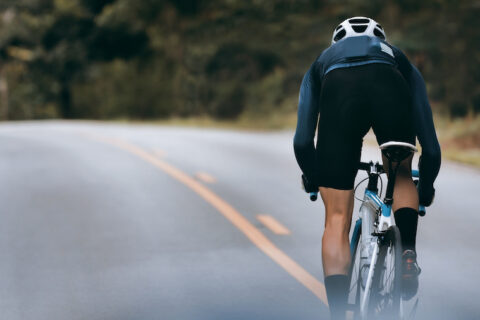Hyrox is a relatively new high-intensity fitness discipline that has surged in popularity in recent years. It was initially launched in Hamburg, Germany in 2017. Today, competitions are held globally.
While the sport has gained the attention of runners, triathletes, gym-goers, and CrossFitters from all over the world, only one scientific study has been conducted on Hyrox to date (Brandt et al., 2025).
In this article, I aim to explain what Hyrox is, identify the key performance determinants, and translate these insights into actionable strategies for your training.
What is Hyrox?
Hyrox is a hybrid fitness event combining functional strength stations with running intervals. Every 1000-meter run is interspaced with a workout station. Race participation requires no qualification and there is no finishing time limit. It is meant to be a fitness race for everyone.
The Hyrox Competition Format
- 1 km run
- 1000-meter SkiErg
- 1 km run
- 50-meter Sled Push
- 1 km run
- 50-meter Sled Pull
- 1 km run
- 80-meter Burpee Broad Jumps
- 1 km run
- 1000-meter Row
- 1 km run
- 200-meter Kettlebell Farmer’s Carry
- 1 km run
- 100-meter Sandbag Lunges
- 1 km run
- 100 x Wall Balls
In total, you run 8 kilometers and complete 8 workout stations.
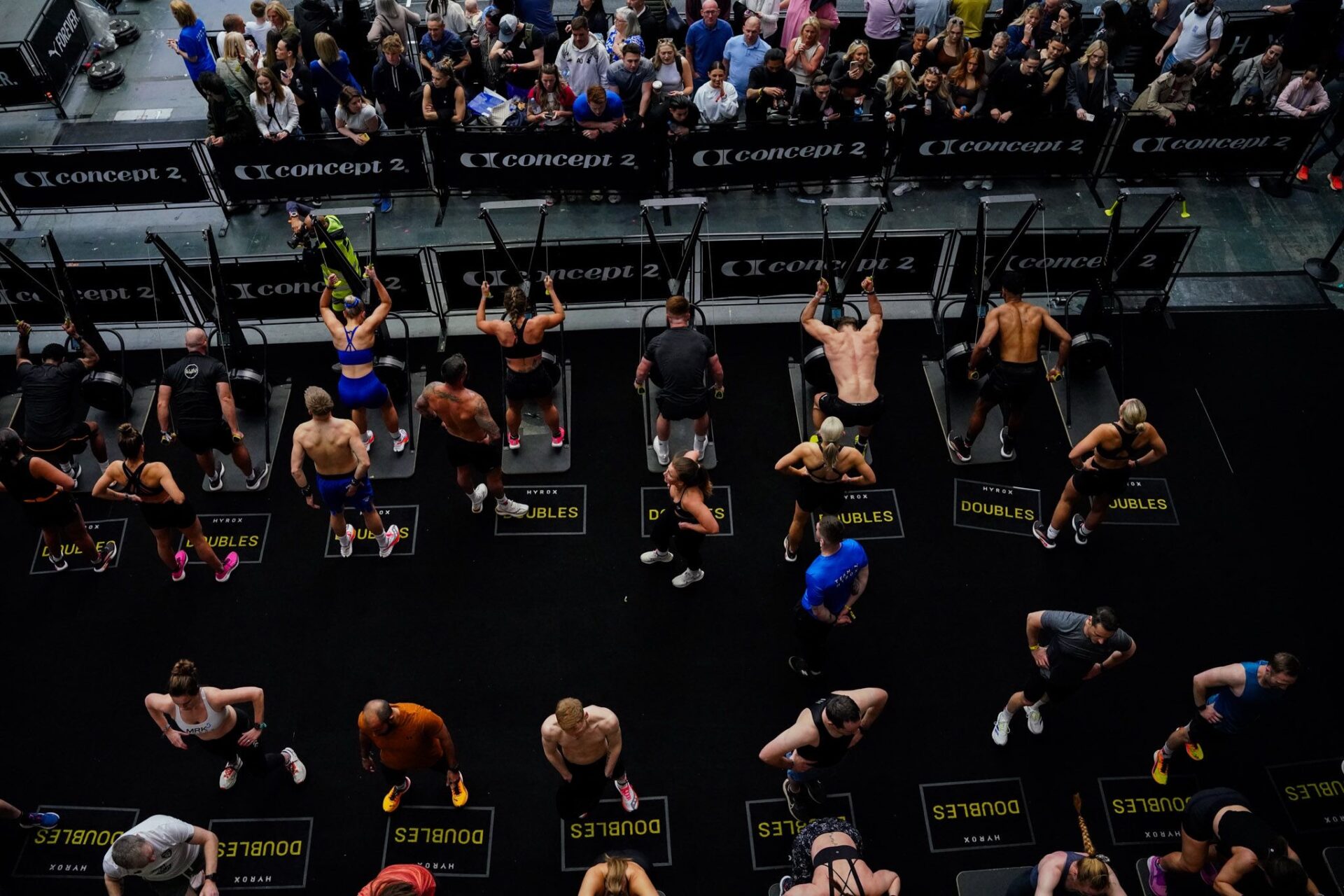
Divisions
You can compete in three different disciplines:
- Individual: Open women/men, Pro women/men
- Doubles (2 athletes): Women/Men/Mixed
- Relay (4 athletes): Women/Men/Mixed
The race format is consistent across all divisions, but weights vary between men and women, as well as between the Open and Pro divisions. For the simplicity of this performance analysis, I will focus on the pro division.
Hyrox Weights and Loads for Men’s and Women’s Divisions
Women Pro:
- 2×25-meter Sled Push (152 kg incl. sled)
- 2×25-meter Sled Pull (103 kg incl. sled)
- 200-meter Kettlebells Farmer’s Carry (2×24 kg)
- 100-meter Sandbag Lunges (20 kg)
- 100 x Wall Balls (6 kg)
Men Pro:
- 2×25-meter Sled Push (202 kg incl. sled)
- 2×25-meter Sled Push (153 kg incl. sled)
- 200-meter Kettlebells Farmer’s Carry (2×32 kg)
- 100-meter Sandbag Lunges (30 kg)
- 100 x Wall Balls (9 kg)
The running volume (8 x 1 km) and the other exercises (1000-meter SkiErg, 80-meter Burpee Broad Jump, and 1000-meter Rowing) are standardized and remain the same across all categories and divisions.
A significant portion of the Hyrox race is running, which raises the question:
What are the key performance determinants? Is it the marathon runner, or the CrossFit athlete, who will out-perform the other in Hyrox? Let us break it down.
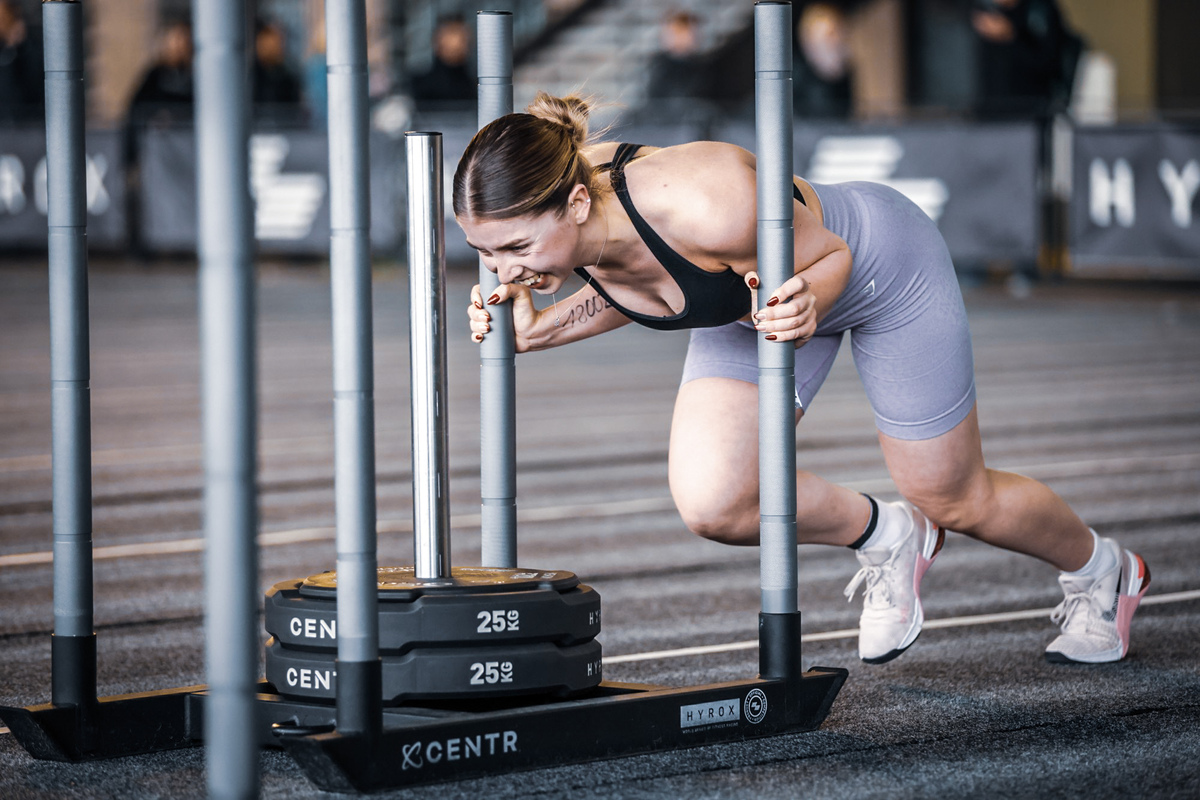
Lauren Weeks and Hunter McIntyre Hyrox Records
The highest-ranking female Hyrox athlete (as of August 2025), Lauren Weeks (USA), has completed the race in 56:23 minutes. The highest-ranking male Hyrox athlete (as of August 2025), Hunter McIntyre (USA), has completed the race in 53:22 minutes.
Their split times for each station are outlined below. Keep in mind that the short run from entering a station to beginning the exercise is included in the station’s overall time. Therefore, a 4:13-minute SkiErg effort for Weeks actually corresponds to a pace closer to 1:58-2:00 minutes per 500 meters.
Endurance-based stations:
Lauren Weeks:
- Total run time: 30:18 min (3:47 min/km average)
- 1000-meter SkiErg: 4:13 min
- 1000-meter Row: 4:15 min
Total duration of endurance events = 38 min 46 sec (≈69% of total race duration).
Hunter McIntyre:
- Total run time: 29:05 min (3:38 min/km average)
- 1000-meter SkiErg: 3:37 min
- 1000-meter Row: 3:57 min
Total duration of endurance events = 36 min 39 sec (≈69% of total race duration).
Almost 70% of the race is endurance-based, and running alone accounts for more than 50% of total race duration.
Strength-based stations:
Lauren Weeks:
- 50-meter Sled Push: 2:48 min
- 50-meter Sled Pull: 3:18 min
- 80-meter Burpee Broad Jump: 3:23 min
- 200-meter Kettlebells Farmer’s Carry: 1:26 min
- 100-meter Sandbag Lunges: 3:25 min
- 100 x Wall Balls: 3:26 min
Total duration of strength events: 17 min 46 sec (≈31% of total race duration)
Hunter McIntyre:
- 2×25-meter Sled Push: 2:14 min
- 2×25-meter Sled Pull: 3:07 min
- 80-meter Burpee Broad Jump: 2:52 min
- 200-meter Kettlebells Farmer’s Carry: 1:28 min
- 100-meter Sandbag Lunges: 3:39 min
- 100 x Wall Balls: 3:27 min
Total duration of strength events: 16 min 47 sec (≈31% of total race duration)
Despite pulling, pushing, and lifting relatively heavy loads, each workout station lasts 1.5-2 minutes or more, and substantially longer for beginner athletes. This means that the workout stations themselves are highly dependent on aerobic energy contribution (oxidative phosphorylation inside the mitochondria).
So, even if you are very strong, you will not be able to complete the stations quickly if your cardiovascular system is underdeveloped.
To excel in Hyrox, you need a well-developed cardiovascular system, high relative strength, and great local muscular endurance.
Hyrox Training and Performance Determinants
Aerobic capacity = maximal oxygen uptake (VO2max) x fractional utilization of VO2max (%VO2max)
VO2max is the maximum amount of oxygen that the body can utilize per time unit during intense exercise, often expressed relative to body weight (ml/kg/min). It represents your endurance “ceiling.” You want this ceiling to be as high as possible because you cannot be at 100% of VO2max throughout the entire race.
In Hyrox, your fractional utilization (%VO2max) may be 80-90% or lower, depending on fitness level.
Running speed correlates linearly with oxygen uptake. The higher the VO2max and %VO2max, the faster you can run during the 1000-meter intervals, as well as recover (clear blood lactate, buffer carbon dioxide; CO2) between stations.
High relative strength = high absolute strength relative to your body weight
You cannot only be enduring in Hyrox. You have to be strong. It does not matter if you can run a 3:20 min/km if you cannot move the sled. Hyrox is a compromise between strength and endurance.
Similar to VO2max, maximal strength (i.e., 1 RM) is your strength “ceiling.” The higher the ceiling, the lighter the weights feel, allowing you to complete the workout stations faster and with greater ease.
The workout stations heavily engage your lower body (quadriceps, hamstrings, glutes) and upper body push and pull muscles (chest, back, shoulders, biceps, triceps).
Building whole-body strength is crucial, but these muscle groups must also develop endurance and be trained sport-specifically—in supersets/simulations mimicking the Hyrox race format.
Local muscular endurance = modality-specific endurance or “peripheral” endurance
In Hyrox, you must manage transitions between running and workout stations. Your muscles will fatigue during the exercise stations. You will utilize your anaerobic energy system and accumulate blood lactate during the high-load exercises (e.g., sled push and pull) and high-rep exercises (e.g., burpees and lunges).
Practicing these transitions and finding a “threshold” effort where you are not limited by accumulated fatigue (i.e., metabolic disturbance related to sodium-potassium balance, blood lactate, hydrogen ions, and blood pH-levels), will allow you to keep going continuously without stopping. This is where you win or lose the most time.
Training for Hyrox
You can lose a lot more time during the runs than the actual workout stations. If you have to slow down or walk, you will potentially lose several minutes during a single run bout. With 8 kilometers in total, those minutes add up. BUT you also have to be strong enough to execute the strength-based stations with relative ease. If the sled does not move, chances are you will not complete the race!
Focus on developing strength and aerobic capacity first, then aim for race specificity.
Where to begin depends on your starting point. If you are naturally strong, prioritize more endurance training. If you are naturally enduring, focus on developing strength first. Be aware of the concurrent training effect. The adaptive signaling pathways for strength and endurance exercise stimuli inhibit one another (Egan & Sharples, 2023).
Therefore, aim for ~6 hours in between sessions or do strength and endurance training on separate days (for most people, this is ideal when the overall training volume is relatively low).
A training week focused on building base fitness can look like this:
- 3 x per week endurance training (1 x easy 45-60 min. run, 1 x easy 90 min. run, 1 x high-intensity interval session, e.g., 3-4 x 8 min.)
- 2 x per week whole-body high-load strength training (high load, low reps)
Once you have established a solid foundation (base fitness), you can start incorporating one race-specific Hyrox-format workout per week as your high-intensity session.
For example:
- 15 min easy run warm-up followed by 2 x (800-meter run, 500-meter SkiErg, 800-meter run, 25-meter sled push, 800-meter run, 25-meter sled pull, 800-meter run, 500-meter row), with 2 min. rest between bouts, and a 5 min. easy run cool-down.
The goal of the specific workout is to create muscular fatigue and anaerobic interference that carry over into the run sections. For example, if you can run 1 km in 4:00 minutes when you are fresh during an interval session, you will likely need to add about 20-30 seconds to each kilometer during a Hyrox race.
The fatigue sets in quickly, and you have to be prepared for what it feels like to run on “heavy legs” and push/pull/throw with “pudding arms”.
The Final Word on Hyrox
Since Hyrox is an endurance-based high-intensity fitness race, it combines two seemingly disparate physiological attributes. Running accounts for more than 50% of the total race duration, and the workout stations rely heavily on aerobic metabolism (>2 min duration).
Thus, VO2max is your endurance “ceiling.” Maximal strength (1 RM) is your strength “ceiling.” TO be at your best, focus on developing both during the initial training period (base phase).
Once you have built a solid foundation of aerobic capacity and relative strength, start incorporating Hyrox-specific workouts to develop local muscular endurance—and mental resilience (you will need it).
References
- Brandt, T., Ebel, C., Lebahn, C., & Schmidt, A. (2025). Acute physiological responses and performance determinants in Hyrox© – a new running-focused high intensity functional fitness trend. Frontiers in Physiology, 16. https://doi.org/10.3389/fphys.2025.1519240
- Egan, B., & Sharples, A. P. (2023). Molecular responses to acute exercise and their relevance for adaptations in skeletal muscle to exercise training. Physiological Reviews, 103(3), 2057–2170. https://doi.org/10.1152/physrev.00054.2021

